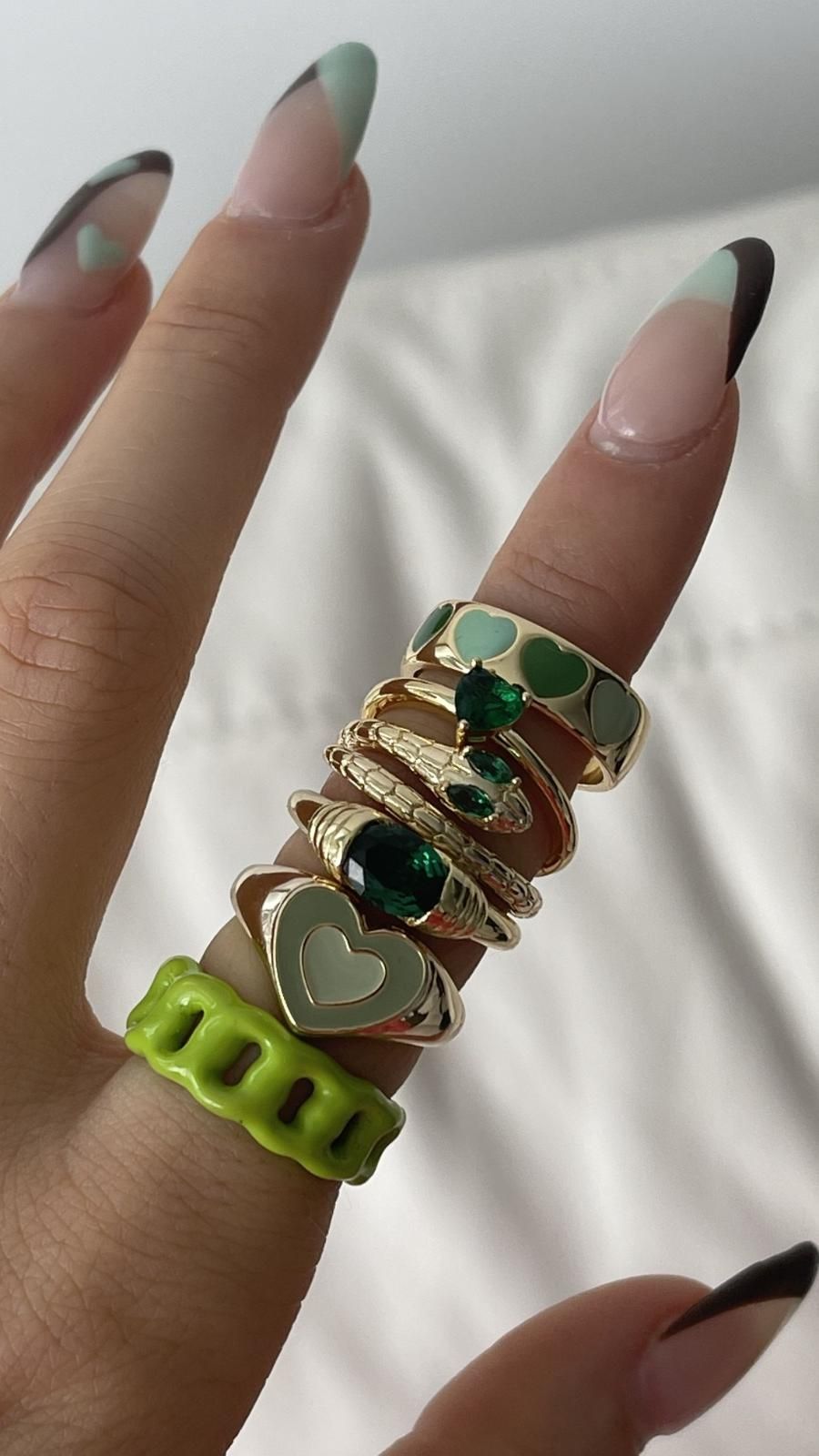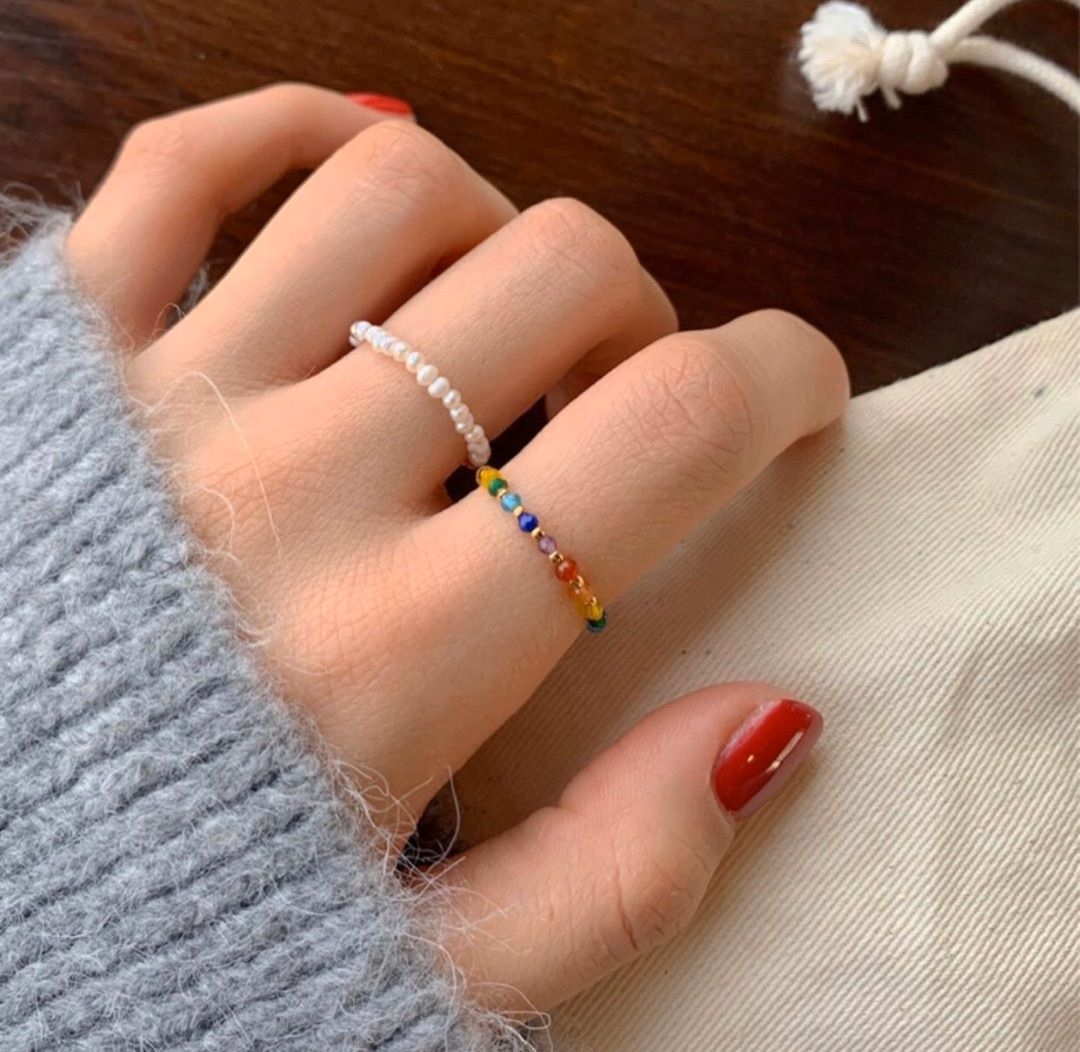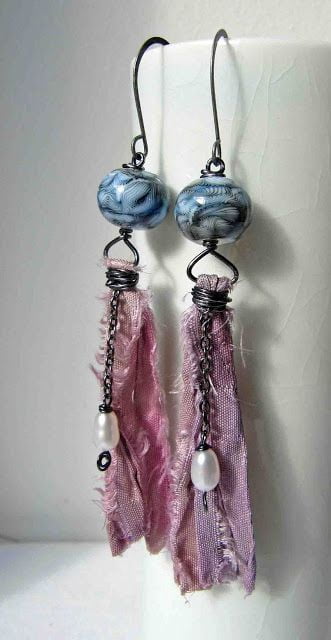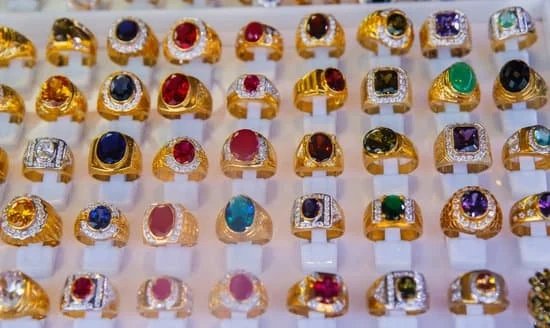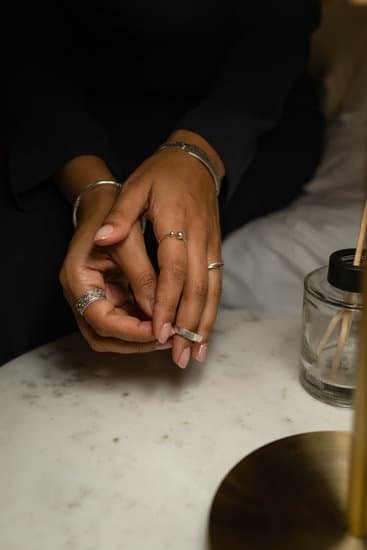Jade jewelry has been prized for centuries for its unique beauty and cultural significance. This article will provide you with essential information on how to care for this precious stone and ensure its longevity.
Jade jewelry is made from jade, a gemstone that comes in various shades of green, ranging from pale to deep emerald. It holds immense value in many cultures around the world, symbolizing luck, prosperity, and wisdom. With a history rooted in ancient civilizations such as the Mayans and Chinese dynasties, jade has become a timeless gemstone cherished by collectors and jewelry enthusiasts alike.
Understanding the significance of jade adds a deeper appreciation for this exquisite gemstone. The word “jade” is derived from the Spanish term “piedra de ijada,” which means “loin stone.” This name reflects jade’s common use in ancient times as a protective talisman worn around the waist to ward off ailments associated with that area of the body. Today, however, jade jewelry is more commonly worn as bracelets, earrings, pendants, or rings for both its aesthetic appeal and symbolic meaning.
As we delve into the world of jade jewelry, it becomes evident why proper care is necessary to preserve its beauty and integrity. From cleaning techniques to identifying genuine jade from imitations or dyed stones, understanding how to care for your jade jewelry will ensure it remains stunning for years to come. Let’s explore all there is to know about caring for this precious gemstone.
Types of Jade Jewelry
Jade jewelry comes in a variety of types and designs, each with its own unique beauty and significance. The two main types of jade used in jewelry are jadeite and nephrite. Jadeite is the rarer and more valuable type, known for its vibrant colors ranging from emerald green to lavender. Nephrite, on the other hand, is more commonly found and often comes in shades of green or white.
When it comes to designs, there are numerous options for jade jewelry. One popular choice is jade bracelets, which can be worn as a statement piece or stacked together for a trendy look. Jade earrings are another elegant option, available in various styles such as studs, hoops, or dangle earrings. Pendants made from jade also make a striking centerpiece for necklaces or can be worn as charms on bracelets.
In addition to these traditional designs, contemporary jewelry artists have experimented with incorporating jade into modern creations. With their intricate carvings and innovative settings, these pieces offer a fresh take on traditional jade jewelry. From geometric shapes to organic forms inspired by nature, there is a wide array of designs available to suit different tastes and styles.
Ultimately, the type of jade jewelry chosen depends on personal preference and the desired aesthetic. Whether it’s a classic design or a trendy contemporary piece, jade jewelry offers timeless elegance that can be treasured for generations to come.
Identifying Genuine Jade
Genuine jade is a valuable and sought-after gemstone, making it important to be able to distinguish authentic jade from imitations or dyed stones. Here are some tips for identifying genuine jade:
- Observe the Color: Genuine jade can come in various colors, including green, white, lavender, and yellow. However, the intensity and uniformity of color should be consistent throughout the piece. Be cautious of pieces that have an unnaturally vibrant or even color.
- Examine Texture and Transparency: Jade typically has a smooth and polished texture. Look closely at the surface of the stone for any cracks, roughness, or unevenness which may indicate a synthetic or lower-quality substitute. Additionally, hold the stone up to light to check its transparency. High-quality jade will usually exhibit a certain level of translucency.
- Conduct a Sound Test: Gently tap on the jewelry with your fingernail or a metal object such as a coin. If it produces a clear and musical tinkling sound, there’s a higher chance that it is genuine jade. Fake or low-quality stones may produce a duller thud-like sound.
- Seek Professional Verification: When in doubt, consider seeking professional verification from a reputable jeweler or gemologist who specializes in working with jade. They can use specialized equipment to accurately determine if the stone is genuine.
It’s also crucial to know what materials are commonly used as fake substitutes for jade so you can spot them easily:
- Serpentine: Serpentine is frequently used as an imitation stone for jade due to its similarity in appearance. However, it lacks the hardness and durability of genuine jade.
- Glass: Some imitation pieces may be made from colored glass that resembles jade but lacks its unique properties.
- 3.Plastic or Resin: These materials can be molded into shapes resembling different types of jade but lack its characteristic structure and natural variations.
Remember, genuine jade is a valuable and precious gemstone. Taking the time to properly identify it will ensure that you are purchasing or wearing authentic jade jewelry.
Understanding Jade’s Composition
Jade is a beautiful gemstone that has been cherished for centuries. Understanding the composition of jade is crucial in order to properly care for and maintain this precious stone.
Jade is actually composed of two different minerals: jadeite and nephrite. Jadeite is considered the higher quality and more valuable type of jade, while nephrite is more commonly found. Both types of jade have unique characteristics and colors, which contribute to their beauty in jewelry.
The mineral composition of jade gives it its durability and also makes it vulnerable to specific forms of damage. Jade is composed mainly of microscopic fibers that are tightly interlocked, giving it strength. However, these fibers can make jade brittle if not properly cared for. As a result, jade jewelry should be protected from sharp blows or impacts, as this can cause chipping or cracking.
To better understand how the composition of jade affects its care, here is a breakdown of key points:
- Jade requires gentle handling: Due to its vulnerability to chipping or cracking, it’s important to handle jade jewelry with care. Avoid wearing it during activities that may expose it to impact or high pressure.
- Avoid extreme temperature changes: Sudden changes in temperature can cause stress on the structure of jade, leading to cracks or fractures. It’s best to remove your jade jewelry before exposing it to hot water or extreme cold.
- Prevent exposure to harsh chemicals: Chemicals such as bleach, acids, or abrasives can damage the surface of jade and cause discoloration. It’s important to avoid contact with cleaning agents or beauty products when wearing your jade jewelry.
Understanding the composition of jade provides valuable insights into how best to care for this exquisite gemstone. By practicing proper handling techniques and avoiding damaging substances, you can ensure that your jade jewelry lasts for generations to come.
| Handling Techniques | Tips |
|---|---|
| Gentle handling | Avoid wearing jade during activities that may expose it to impact or high pressure. |
| Avoid extreme temperature changes | Remove jade jewelry before exposing it to hot water or extreme cold. |
| Prevent exposure to harsh chemicals | Avoid contact with bleach, acids, or abrasives when wearing jade jewelry. |
Proper Cleaning Techniques for Jade Jewelry
Step-by-step guide on how to clean jade jewelry safely
Cleaning jade jewelry requires a gentle and careful approach to ensure that the stones are not damaged. Follow these step-by-step instructions to safely clean your precious jade jewelry:
- Prepare a cleaning solution: Fill a bowl with warm water and add a small amount of mild soap or dishwashing liquid. Avoid using harsh chemicals or abrasive cleaners that can damage the jade.
- Soak the jewelry: Place your jade jewelry into the bowl of soapy water and let it soak for about 10-15 minutes. This will help loosen any dirt or debris stuck on its surface.
- Gently scrub: After soaking, use a soft-bristled toothbrush or a soft cloth to gently scrub the surface of the jade jewelry. Be sure to reach all the crevices and hard-to-reach areas, removing any remaining dirt or grime.
- Rinse thoroughly: Rinse the jade jewelry under warm running water to remove any soap residue. Make sure all traces of soap are washed away, as they can cause discoloration over time.
- Pat dry with a soft cloth: Carefully pat dry your jade jewelry with a soft, lint-free cloth. Avoid rubbing too vigorously as this can potentially scratch the surface of the stone.
Recommended cleaning solutions and tools to use
When it comes to cleaning solutions for jade, simplicity is key. Mild soaps or dishwashing liquids are sufficient for most routine cleaning needs. However, it’s important to avoid using acidic or abrasive cleaners that can harm the delicate surface of the stone.
As for tools, opt for soft bristle toothbrushes or gentle cloths made from non-abrasive materials like microfiber or cotton. These materials will effectively clean your jade jewelry without causing any damage.
Remember to always exercise caution while cleaning your jade jewelry and avoid using ultrasonic cleaners or steamers, as they can cause fractures or other types of damage to the stone.
Tips for preventing scratching, chipping, and other forms of damage
To minimize the risk of scratching or chipping your jade jewelry, there are several precautions you can take:
- Remove jewelry before engaging in physical activities: Whether it’s working out at the gym or doing household chores, it’s best to take off your jade jewelry to prevent accidental damage.
- Avoid exposure to harsh chemicals: Chemicals such as bleach, ammonia, and chlorine can dull the luster of jade and even cause discoloration. Take care to remove your jewelry before using any chemical cleaning solutions or swimming in chlorinated pools.
- Store jewelry separately: When not wearing your jade jewelry, store it in a soft pouch or a compartmentalized box to prevent scratching against other harder objects. Avoid storing jade pieces together with other gemstones that may scratch its surface.
By following these proper cleaning techniques and taking necessary precautions to prevent damage, you can ensure that your jade jewelry retains its beauty and longevity for years to come.
Avoiding Harsh Chemicals and Cleaning Methods
Jade jewelry is a precious and delicate gemstone that requires proper care to maintain its beauty and durability over time. When cleaning jade jewelry, it is crucial to avoid using harsh chemicals and cleaning methods that can potentially damage the stone. In this section, we will discuss the substances and cleaning techniques to avoid to ensure the longevity of your jade jewelry.
Avoiding Harsh Chemicals
To protect your jade jewelry from discoloration or damage, it is important to avoid using harsh chemicals such as bleach, ammonia, or strong acids when cleaning. These chemical substances can erode the surface of the jade stone, leading to scratches or dullness. Additionally, avoid exposing your jade jewelry to substances like hairspray, perfume, or lotions that may contain chemicals harmful to the stone’s composition.
Gentle Cleaning Methods
When cleaning your jade jewelry, opt for gentle methods rather than aggressive scrubbing or harsh abrasives. A soft cloth dampened with warm water is often sufficient for regular maintenance. Gently wipe the surface of the jade in a circular motion to remove dust and dirt. If necessary, a mild soap specifically recommended for delicate gemstones can be used along with warm water. After cleaning, ensure thorough rinsing with clean water and pat dry with a soft cloth.
Special Considerations
It is essential to note that ultrasonic cleaners should never be used for cleaning jade jewelry as they can cause cracks or fractures due to the intense vibrations they produce. Avoid steam cleaners as well since their high pressure and heat can also harm the stone. Furthermore, rough brushes or abrasive materials should not be used on jade as they may scratch or damage its surface.
By avoiding harsh chemicals and practicing gentle cleaning methods, you can effectively preserve the beauty of your jade jewelry while protecting it from potential damage caused by improper care.
Storing and Protecting Jade Jewelry
Proper storage is essential for preserving the beauty and integrity of your jade jewelry. Here are some best practices to follow:
- Store Separately: Keep your jade jewelry separate from other pieces to avoid scratching or damage. Jade’s hardness makes it resistant to scratches, but it can still be scratched by harder gemstones or metals. Store your jade jewelry in a soft pouch or individual compartment within a jewelry box to minimize contact with other items.
- Avoid Direct Sunlight: Exposure to sunlight can cause fading and discoloration in jade. To prevent this, store your jewelry in a cool, dark place away from direct sunlight. Natural light will not harm your jewelry significantly, but prolonged exposure over time may affect its color.
- Moisture Control: Jade is sensitive to changes in humidity, so it is essential to protect it from excess moisture. Avoid storing jade jewelry in damp areas like bathrooms or basements where humidity levels are high. Consider using silica gel packets inside your storage container to absorb moisture and maintain optimal conditions.
- Individual Wrapping: If you don’t have a soft pouch or individual compartments, you can wrap each piece of jade jewelry separately in a soft cloth or tissue paper. This will help protect the surface from scratches and reduce the risk of accidental damage when handling the jewelry.
By following these storage practices, you can ensure that your jade jewelry remains safe and well-protected for years to come.
Preventing Damage and Wear
In addition to proper storage, there are some precautions you can take to prevent scratches, chipping, and other forms of damage on your jade jewelry:
- Gentle Handling: Handle your jade jewelry with care to avoid accidentally dropping or bumping it against hard surfaces. Jade is relatively durable but still vulnerable to impact damage. Hold the piece firmly but gently when wearing or cleaning it.
- Remove During Physical Activities: It is advisable to remove your jade jewelry during activities that may expose it to unnecessary risks. Take off your jewelry before participating in sports, exercising, or doing household chores that involve chemicals or vigorous movements. This will help minimize potential damage and increase the longevity of your jade jewelry.
- Avoid Contact with Chemicals: Harsh chemicals can cause irreversible damage to jade and affect its color and luster. Remove your jewelry before applying perfumes, lotions, or hairsprays, as these products can contain chemicals that may negatively impact the stone. Also, avoid using harsh cleaning agents or abrasive solutions when cleaning your jade jewelry.
By following these preventive measures, you can reduce the risk of damage and ensure that your jade jewelry stays beautiful for many years.
Professional Maintenance and Repairs
While regular care and preventive measures are usually sufficient for maintaining jade jewelry, there may be instances where professional maintenance or repair is necessary. Seeking expert assistance is crucial in the following situations:
- Significant Damage: If your jade jewelry has suffered significant damage like a chip or crack in the stone or if the setting has been severely damaged, it is best to consult a professional jeweler experienced with working with jade. Attempting repairs on your own without proper expertise may lead to further damage.
- Loose Stones: If you notice any looseness in the setting of your jade piece, it’s important to have it repaired promptly. Wearing loose jewelry increases the chance of losing precious gemstones, so getting them properly secured by a professional jeweler is essential.
- Complex Cleaning: If you are unsure about how to clean certain types of jade jewelry safely or suspect that it requires specialized cleaning techniques due to intricate designs or delicate settings, consulting a jeweler experienced in handling such pieces can provide peace of mind.
When looking for a professional jeweler or specialist for maintenance and repairs on your valuable jade jewelry, seek recommendations from trusted sources or look for professionals who have experience specifically with jade. Their expertise will ensure that your jewelry is handled and cared for properly, prolonging its lifespan and maintaining its beauty.
Preventing Damage and Wear
Jade jewelry is known for its durability, but it is still susceptible to damage and wear over time. By taking a few precautions and following proper care practices, you can help preserve the beauty of your jade jewelry for years to come.
One of the most important ways to prevent damage to your jade jewelry is by avoiding contact with hard surfaces. Jade has a hardness level of around 6.5 on the Mohs scale, which means it is relatively tough but can still be scratched. To minimize the risk of scratching, it is best to store your jade jewelry separately from other pieces, ideally in a soft pouch or a jewelry box with individual compartments.
Another common cause of damage to jade is accidental dropping or bumping. To avoid this, always handle your jade jewelry with care and be mindful of where you place it when not wearing it. Avoid wearing your jade necklace or pendant while engaging in activities that may put it at risk of high impact, such as sports or physical labor.
In addition to physical damage, exposure to chemicals can also harm jade and cause discoloration. It is important to avoid exposing your jade jewelry to harsh chemicals such as bleach, ammonia, and other cleaning agents. Even household items like hairspray or perfume can affect the color and luster of jade over time. Make sure to remove your jade jewelry before applying any chemical products or before entering chlorinated pools or hot tubs.
By following these preventative measures, you can significantly reduce the risk of damage and wear to your precious jade jewelry. However, if you do notice any signs of damage such as chipping or cracks, it is best to seek professional maintenance or repair. Look for reputable jewelers who specialize in working with jade, as they have the expertise needed to properly handle and restore your valuable pieces.
Remember that proper care and maintenance are essential for preserving the beauty and longevity of your jade jewelry. By treating your jade jewelry with care and taking the necessary precautions, you can enjoy its elegance and significance for generations to come.
| Prevention Measures | Tips |
|---|---|
| Avoid contact with hard surfaces | Store jade jewelry separately in a soft pouch or individual compartments. |
| Handle with care | Avoid dropping or bumping jade jewelry. Remove it before engaging in activities that may put it at risk. |
| Avoid exposure to chemicals | Keep jade jewelry away from harsh chemicals like bleach and ammonia. Remove it before using hair products or entering chlorinated pools or hot tubs. |
| Seek professional maintenance or repair when needed | If you notice any damage such as chipping or cracks, consult a reputable jeweler specializing in jade to properly handle and restore your jewelry. |
Professional Maintenance and Repairs
While taking proper care of your jade jewelry at home is essential, there may come a time when you need to seek professional maintenance or repair. Professional jewelers or specialists experienced with jade can provide the expertise needed to ensure your precious pieces are handled correctly.
One situation in which professional maintenance is recommended is when your jade jewelry becomes loose or needs resizing. Over time, the settings and clasps on your jewelry can wear down, causing them to become loose or unstable. A jeweler with expertise in jade can examine and repair any loosened components, ensuring that your jewelry remains secure and wearable.
Additionally, if you notice any damage to your jade jewelry such as chips, cracks, or scratches, it is advisable to consult a professional for repairs. Attempting to fix these issues yourself could potentially worsen the damage. A skilled jeweler will have the necessary tools and techniques to carefully repair any imperfections without compromising the integrity of the stone.
When choosing a professional for maintenance or repairs, it is important to find someone who specializes in jade or has extensive experience working with this unique gemstone. Look for recommendations from trusted sources like friends, family members, or reputable online reviews. By entrusting your jade jewelry to a qualified professional, you can ensure that it receives the care and attention it deserves.
Conclusion
In conclusion, the beauty of jade jewelry can be preserved for generations to come with proper care and maintenance. Throughout this article, we have explored the significance of jade jewelry and its cultural importance, as well as the different types of jade and popular designs. We have also discussed how to identify genuine jade and understand its composition, which affects its durability and vulnerability to damage.
To keep your jade jewelry looking its best, it is important to follow proper cleaning techniques and avoid harsh chemicals or cleaning methods that could harm the stone. By using a soft cloth and mild soap, you can safely clean your jade jewelry without causing any damage. Additionally, storing your jade jewelry in a suitable storage option such as a soft pouch or a jewelry box with individual compartments will help prevent scratching or other forms of damage.
Taking preventative measures to avoid damage and wear is also crucial in preserving the beauty of jade jewelry. This includes handling the jewelry with care to avoid accidentally dropping or bumping it. However, accidents do happen, and if your jade jewelry becomes damaged, it is recommended to seek professional maintenance or repair from reputable jewelers or specialists experienced with working with jade.
Frequently Asked Questions
Can you shower with jade jewelry?
Jade jewelry is generally durable, but it is not recommended to shower with it. While jade is resistant to scratches and can withstand everyday wear, exposure to water and chemical products in personal care items can potentially damage the stone over time.
The prolonged exposure to water can cause a change in the color or texture of the jade, and it may also loosen the adhesive used in setting the gemstone. To preserve the longevity and beauty of your jade jewelry, it is advisable to remove it before showering or swimming.
Can I wear my jade ring everyday?
Yes, you can definitely wear a jade ring every day if you choose to do so. Jade is known for its durability and strength, making it suitable for daily wear. However, as with any piece of jewelry, it’s essential to take precautions to keep your jade ring in optimal condition.
Avoid exposing it to harsh chemicals or abrasive surfaces that could scratch or damage the stone. Regularly inspect and clean your jade ring, ensuring that prongs or settings are secure if applicable. By caring for your jade ring properly, you can enjoy wearing it every day without any issues.
Does jade need to be oiled?
Jade does not necessarily require oiling; however, some people choose to oil their jade jewelry as a way of maintaining its luster and enhancing its appearance. Oiling involves applying mineral oil or a specialized “jade oil” onto the surface of the stone. This treatment helps moisturize and rejuvenate the stone by filling in micro-fractures and enhancing its natural colors.
Oiling can also provide protection against scratches and cracks while adding a radiant shine to your jade piece. If you choose to oil your jade jewelry, make sure to use reputable oils designed specifically for this purpose and follow proper application guidelines provided by experts or jewelers. It’s important to note that not all types of jade may benefit from oiling, so consulting an expert or doing thorough research beforehand is recommended.

Welcome to my jewelry blog! My name is Sarah and I am the owner of this blog.
I love making jewelry and sharing my creations with others.
So whether you’re someone who loves wearing jewelry yourself or simply enjoys learning about it, be sure to check out my blog for insightful posts on everything related to this exciting topic!

